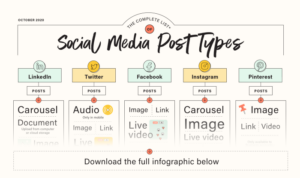Launching a Content Hub sets the stage for a dynamic digital marketing strategy, weaving together creativity and strategy to elevate your brand’s online presence. From planning to promotion, this comprehensive guide dives into the key aspects of creating a successful content hub.
Overview of Launching a Content Hub
A content hub is a centralized platform where businesses or brands can create, organize, and distribute valuable content to their target audience. It serves as a hub for all content-related activities, including blog posts, videos, podcasts, and more.
Having a content hub is crucial in modern digital marketing as it helps businesses establish thought leadership, improve brand awareness, drive traffic to their website, and engage with their audience on a deeper level.
Benefits of Having a Content Hub
- Increased brand visibility and credibility: By consistently publishing high-quality content on a content hub, businesses can position themselves as industry experts and build trust with their audience.
- Improved and organic traffic: Content hubs that are optimized for search engines can attract more organic traffic to the website, leading to higher visibility and potential leads.
- Enhanced audience engagement: A content hub allows businesses to create personalized content for their target audience, increasing engagement and building stronger relationships with customers.
Examples of Successful Content Hubs
1. HubSpot’s content hub offers a wide range of resources, including blog posts, guides, webinars, and templates, to help businesses improve their marketing strategies.
2. Red Bull’s content hub, The Red Bulletin, features engaging stories, videos, and articles related to sports, culture, and lifestyle, catering to their adventurous audience.
3. Adobe’s CMO.com serves as a valuable resource for marketing professionals, providing insights, trends, and best practices in the industry.
Planning and Strategy
When it comes to planning a content hub, the initial steps are crucial in setting a solid foundation for success. It all starts with identifying your target audience and understanding their needs and preferences. This will help you tailor your content to resonate with your audience and drive engagement.
Key Components of a Content Hub Strategy
- Content Planning: Develop a content calendar outlining the topics, formats, and publishing schedule to ensure consistency and relevance.
- Optimization: Implement best practices to improve visibility and attract organic traffic to your content hub.
- Content Distribution: Strategically share your content across various channels, including social media, email, and partnerships, to reach a wider audience.
- Performance Analysis: Monitor key metrics like traffic, engagement, and conversions to measure the effectiveness of your content strategy and make data-driven decisions.
Aligning Content Hub Strategy with Business Goals
To align your content hub strategy with overall business goals, it’s essential to have a clear understanding of your company’s objectives and how content can support them. Identify specific KPIs that align with your business goals, such as brand awareness, lead generation, or customer retention. By creating content that directly addresses these goals and measuring the impact through analytics, you can ensure that your content hub contributes to the success of your business.
Content Creation: Launching A Content Hub

To create engaging and high-quality content for a content hub, it is essential to understand your target audience and tailor your content to meet their needs and preferences. Incorporating a mix of different types of content can keep the hub interesting and relevant. Consistency in content creation is key to maintaining a loyal audience and ensuring that your hub stays updated and valuable.
Types of Content
- Articles: Well-researched and informative articles can provide valuable insights to your audience.
- Videos: Engaging videos can help convey complex information in a more digestible format.
- Infographics: Visual representations of data or concepts can attract and retain audience attention.
Maintaining Consistency
Consistency in content creation involves establishing a content calendar, setting deadlines for content creation, and adhering to a consistent tone and style. Regularly updating your content hub with fresh and relevant content can help retain audience interest and keep them coming back for more.
Content Organization and Management
When it comes to managing a content hub effectively, organization is key. By implementing best practices for content organization and utilizing the right tools and platforms, you can ensure that your content is easily navigable and searchable for your audience.
Organizing Content
One of the best practices for organizing content within a hub is to create a clear and logical structure. This can include categorizing content based on topics, themes, or formats to make it easy for users to find what they are looking for.
- Utilize folders or tags to group related content together.
- Create a content calendar to plan and schedule upcoming content.
- Implement a consistent naming convention for your content files.
Tools and Platforms
There are several tools and platforms available that can help in managing a content hub effectively:
- Content Management Systems (CMS): Platforms like WordPress, Drupal, or HubSpot can help you organize and publish content easily.
- Project Management Tools: Tools like Trello or Asana can help you keep track of content creation tasks and deadlines.
- Analytics Tools: Tools like Google Analytics can provide insights into how your content is performing.
Categorizing and Tagging Content
Properly categorizing and tagging content is essential for easy navigation and searchability:
- Use descriptive and relevant tags that accurately represent the content.
- Create a hierarchy of categories to organize content in a meaningful way.
- Implement a search function that allows users to search for content based on tags or s.
Promotion and Distribution

To ensure the success of a content hub, it is crucial to have effective strategies in place for promotion and distribution. By utilizing various channels and techniques, you can attract your target audience and drive traffic to your hub.
Strategies for Promoting a Content Hub, Launching a Content Hub
- Utilize social media platforms to share content and engage with followers.
- Collaborate with influencers or industry experts to reach a larger audience.
- Guest post on relevant websites to increase visibility and credibility.
- Optimize content for search engines to improve discoverability.
Importance of and Social Media
- helps your content rank higher in search engine results, making it easier for users to find.
- Social media allows you to connect with your audience, promote your content, and drive traffic to your hub.
- Both and social media play a significant role in increasing visibility and attracting organic traffic.
Leveraging Email Marketing and Other Channels
- Build an email list and send out newsletters with links to your content hub to drive traffic.
- Utilize online communities and forums to share your content and engage with potential readers.
- Consider paid advertising on platforms like Google Ads or social media to reach a broader audience.
- Explore partnerships with other websites or businesses to cross-promote your content.










